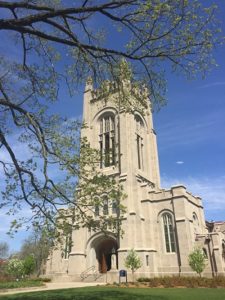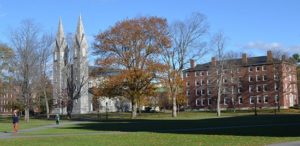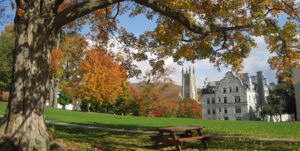Liberal arts college admission’s offices today are well oiled machines. They know who their target applicants are and they do their best to attract them. Competition among top schools can be very tight, and this is one aspect that helps make these schools so great. But, what is it about these schools that attract students in the first place? What other aspects can we look to in order to see what goes into making a first class liberal arts education?
To begin with, we selected the top nine liberal arts colleges in the country, as determined by the average SAT score of incoming freshmen, and looked at them as a group. We compared them to Ivy League schools, and we compared them to other liberal arts colleges. Finally, we looked for similarities among them to see what makes a great liberal arts college.
The SAT, or scholastic aptitude test, was the standard by which most college applicants were judged before the advent of the ACT. Both tests are now a part of the college admissions process. The average composite score for the ACT nationwide was 21 in 2014. Looking at the top nine liberal arts colleges, however, the lowest composite score among applicants was 29. The high was 35 – nearly perfect. In 2014, only 1,407 students nationwide reached a perfect 36 composite score. Based on these scores, we can see that competition for the spots offered at these top schools is indeed intense, and the readiness level required of applicants is very high.
Going further and looking specifically at the acceptance rates for the top four most selective liberal arts colleges in 2013, shows just exactly how competitive these colleges are. Amherst and Swarthmore colleges each had minuscule acceptance rates of 14.3 percent. Bowdoin and Williams colleges were close behind with 15 and 17.5 percent respectively (US News and World Report). These figures rank high, not only among liberal arts colleges, but among all colleges and universities around the country. In addition, acceptance rates for nearly all of these top liberal arts colleges have decreased over the past few years, some as drastically as 10 percent.
Though this often has to do with an increase in the number of applicants, our point is today’s college application process is not what it was 20 years ago. High expectations and tough competition across the board make it much more difficult for a student to be accepted to their top choice of college, especially if that school happens to be one of the elites. Consequently, these top schools have an exceptional quality of student, reflected in their statistics, and few shine brighter than these.
Even after a student has gained admission to a top liberal arts school, expectations continue to remain very high. In terms of work load alone, 90% of students at the top nine liberal arts colleges say that they study three or more hours a day. This is a number that outpaces multiple Ivy League schools. Moreover, most of these students rate their workload as “difficult” or “very difficult.” One might think that there is a great deal of pressure on students at top schools, but taking a closer look reveals some interesting facts!
Number one among these is that students are immersed in a culture that emphasizes scholarship. The culture at these schools is an aspect, with a number of facets that we looked at closely in our Liberal Arts Colleges Student Survey. Eighty percent of students at the top liberal arts colleges described the academic atmosphere “collaborative” or “highly collaborative,” as opposed to the more competitive Ivy League colleges. Professors and peers work together at these schools to achieve a positive outcome, and focus on quality scholarship.
This is perhaps the key aspect of a top notch liberal arts education: a collaborative focus on quality scholarship.
According to our survey of students at these schools, nearly 60% talk with their professors outside of class at least once a week, and this speaks to the veracity of the statistic mentioned above, and reinforces our view that a liberal arts education at one of the top schools immerses the student in a culture of quality scholarship. Other facets that separate top liberal arts colleges from other schools include: A lower student to faculty ratio, and yes, lower acceptance rates. When it comes to acceptance rates, one looks to standardized testing, and when one looks to standardized testing, one looks to the SAT’s and ACT’s.
There are many factors that separate a great liberal arts college from the others, and we have touched on a few of them, but there are many others. The social culture and influence of alcohol play a role, as well as financial issues such as endowments.
If you are considering one of these colleges, you can find a valuable comparison between these schools and Ivy League colleges on this website, as well as specific information about each elite liberal arts college on its school profile.



